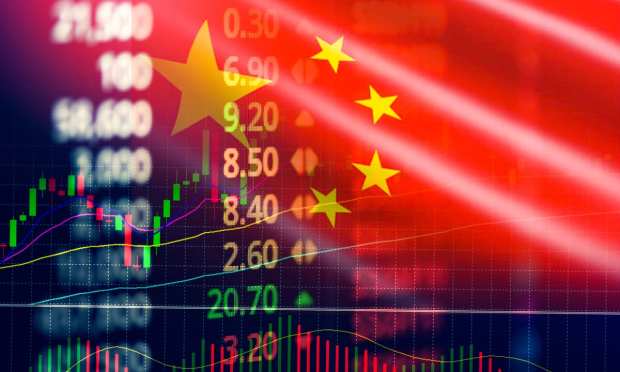OECD: China To Lead 2021 World Economic Recovery While Europe Lags

China is forecast to be the first major economy to recover from the global pandemic recession, with Europe lagging behind, according to the Organization for Economic Cooperation and Development (OECD).
China is expected to see its gross domestic product grow 9.7 percent in 2021’s fourth quarter compared to Q4 2019, according to OECD figures quoted by The Wall Street Journal.
The Asian economic powerhouse is expected to be followed by South Korea at 1.6 percent growth between Q4 2019 and Q4 2021. That is forecast to be followed by Indonesia (1.5 percent growth during the period), then Turkey (0.4 percent), Russia (0.2 percent) and the United States (0.1 percent).
On the flip side, Argentina is expected to fare the worst of the large economies, with its gross domestic product (GDP) tumbling 7.9 percent from Q4 2019 to Q4 2021. The U.K. is expected to be the next slowest to recover, with its GDP sliding 6.4 percent over the two-year period.
Britain is followed by Mexico, South Africa, Italy, Brazil, India, the Eurozone, France, Canada, Germany, Japan, Saudi Arabia and finally Australia, with a projected 0.3 percent GDP decline for Q4 2021 vs. Q4 2019.
For 2021 as a whole, the OECD sees the world economy growing 4.2 percent after falling by roughly the same amount in 2020. China will account for around one-third of the world’s economic recovery in 2021, the OECD said.
Although mass vaccinations loom on the horizon, the OECD was forced to cut its projections amid a new surge of COVID-19 infections in the Northern Hemisphere. The economic group had previously forecast global growth of 5 percent for 2021.
The OECD also cut its U.S. economic growth forecast to 3.2 percent from a previous 4 percent, while Eurozone growth was lowered to 3.6 percent from 5.1 percent. However, China’s projected growth remained stable at around 8 percent.
That said, global COVID-19 vaccination could be a game-changer. The OECD believes that rapid deployment of the vaccine could push global growth up to 5 percent in 2021 and 5.5 percent in 2022. Conversely, slower deployment would result in the global growth of only 1.45 percent in 2021 and 2.2 percent in 2022, the Journal quoted the agency as saying.
The OECD’s growth projections also assume additional financial stimulus initiatives in both the U.S. and Europe.
In October, international business leaders called for urgent action to counter “elevated” downside risks from a global economy. Business 20 (B20), a group of top CEOs from around the world, met in advance of the G-20 summit in Saudi Arabia and warned that leaders of the world’s top economies must take meaningful action.
“The global economy is in its worst state in a century,” warned Yousef Al-Benyan, chairman of the B20, according to CNBC and other press reports. “The challenging opportunity is to build back better, with real urgency required from policymakers and business leaders.”
In particular, the international business group called upon G20 leaders to take “bold and broad-based” action, citing the threat from trade wars, tensions between various world powers and emerging challenges in the financial sector.
In November, the International Monetary Fund (IMF) likewise called on G20 member states to continue pumping money into their economies to help offset the pandemic’s devastating economic effects.
In an announcement posted to its blog on Nov. 2, the IMF said that swift action by the G20 has “helped avert an even worse economic crisis in the wake of COVID-19 than what has been witnessed.”
In March, leaders of the G20 said they would infuse $5 trillion into the global economy to help counter the impact of the pandemic.
Worldwide, the OECD forecast that total global growth will be only 0.6 percent for Q4 2021 as compared to Q4 2019.
